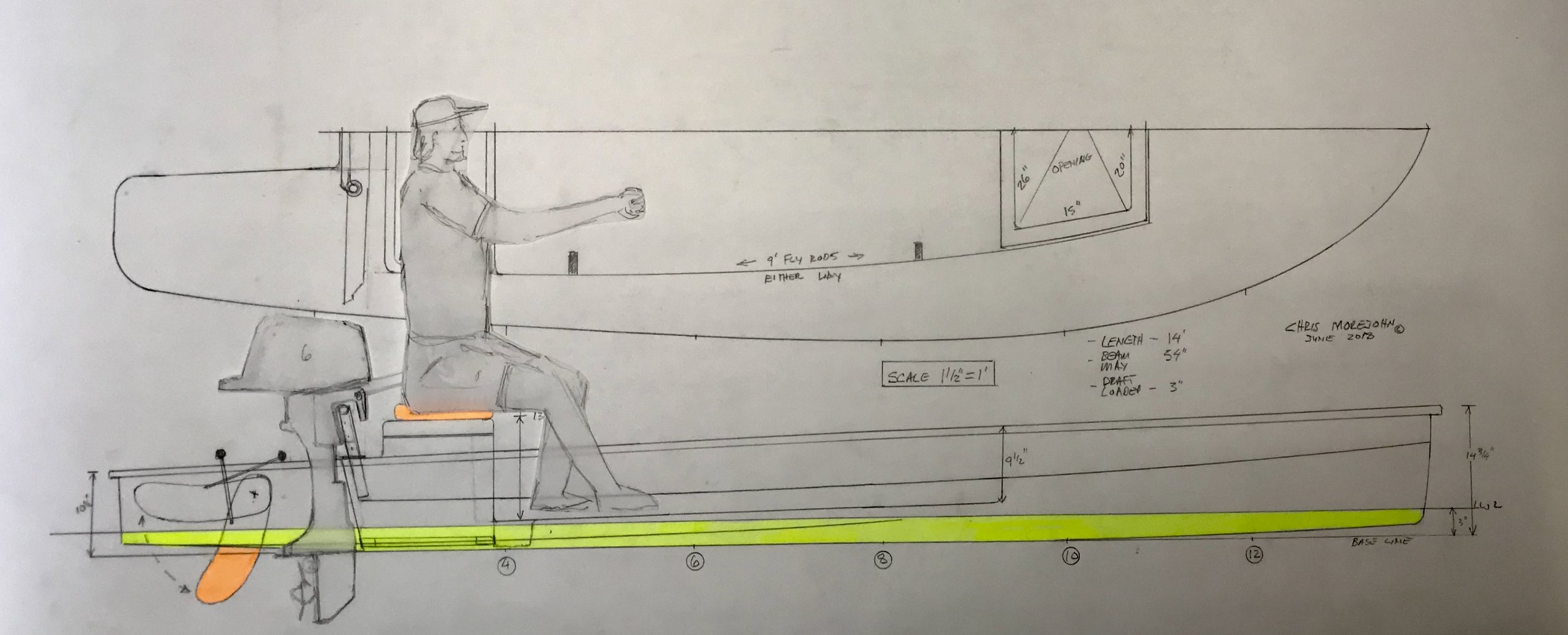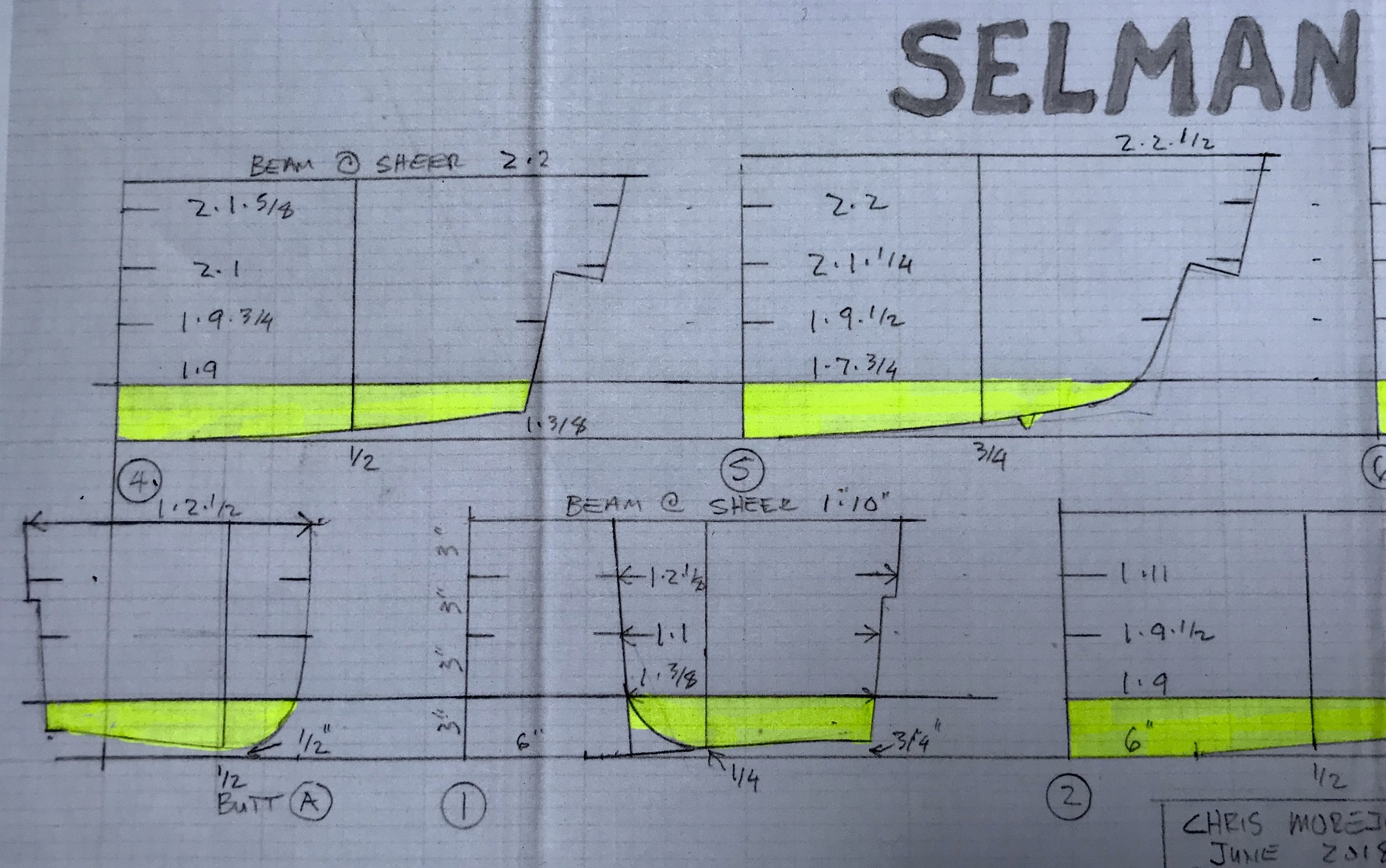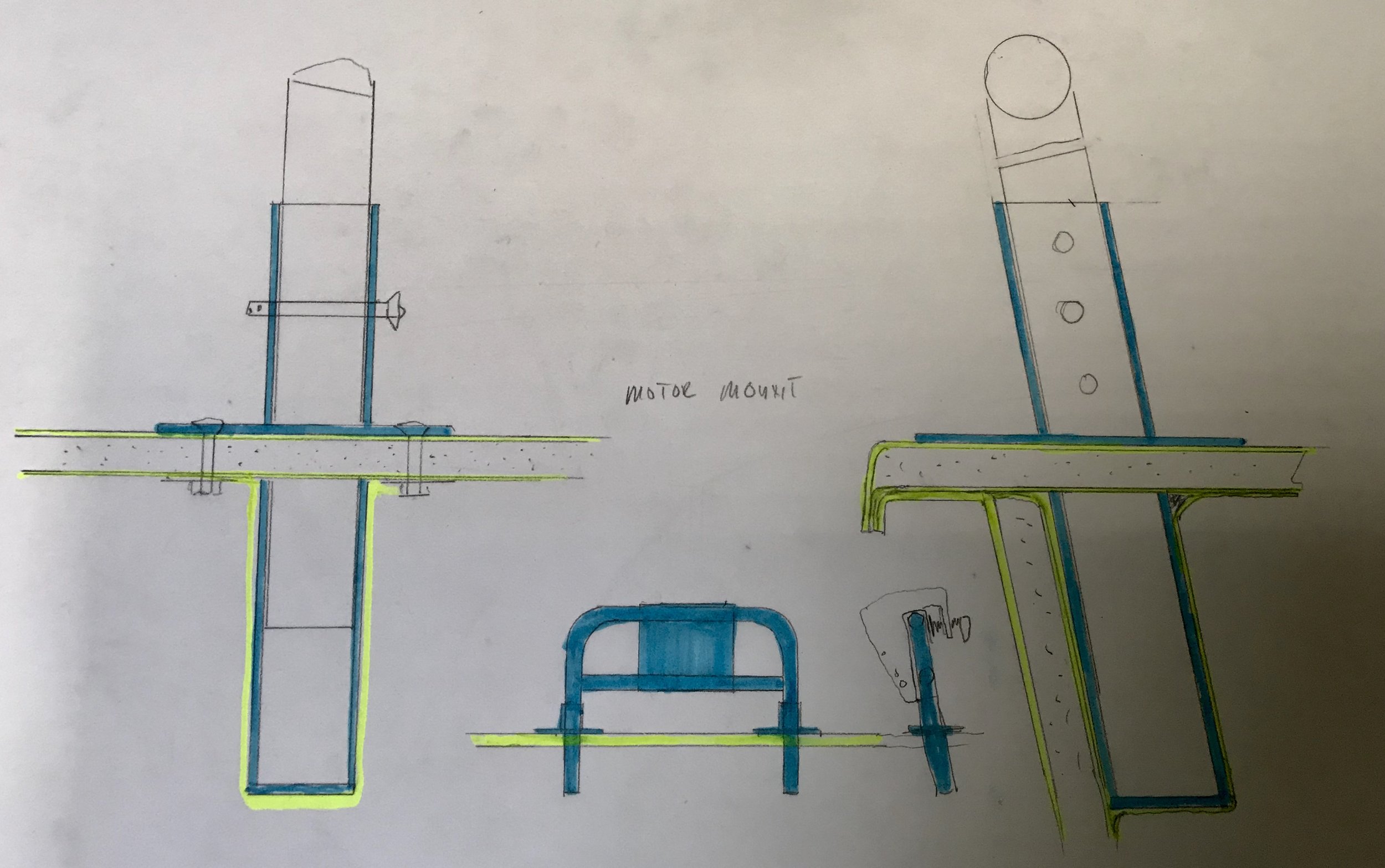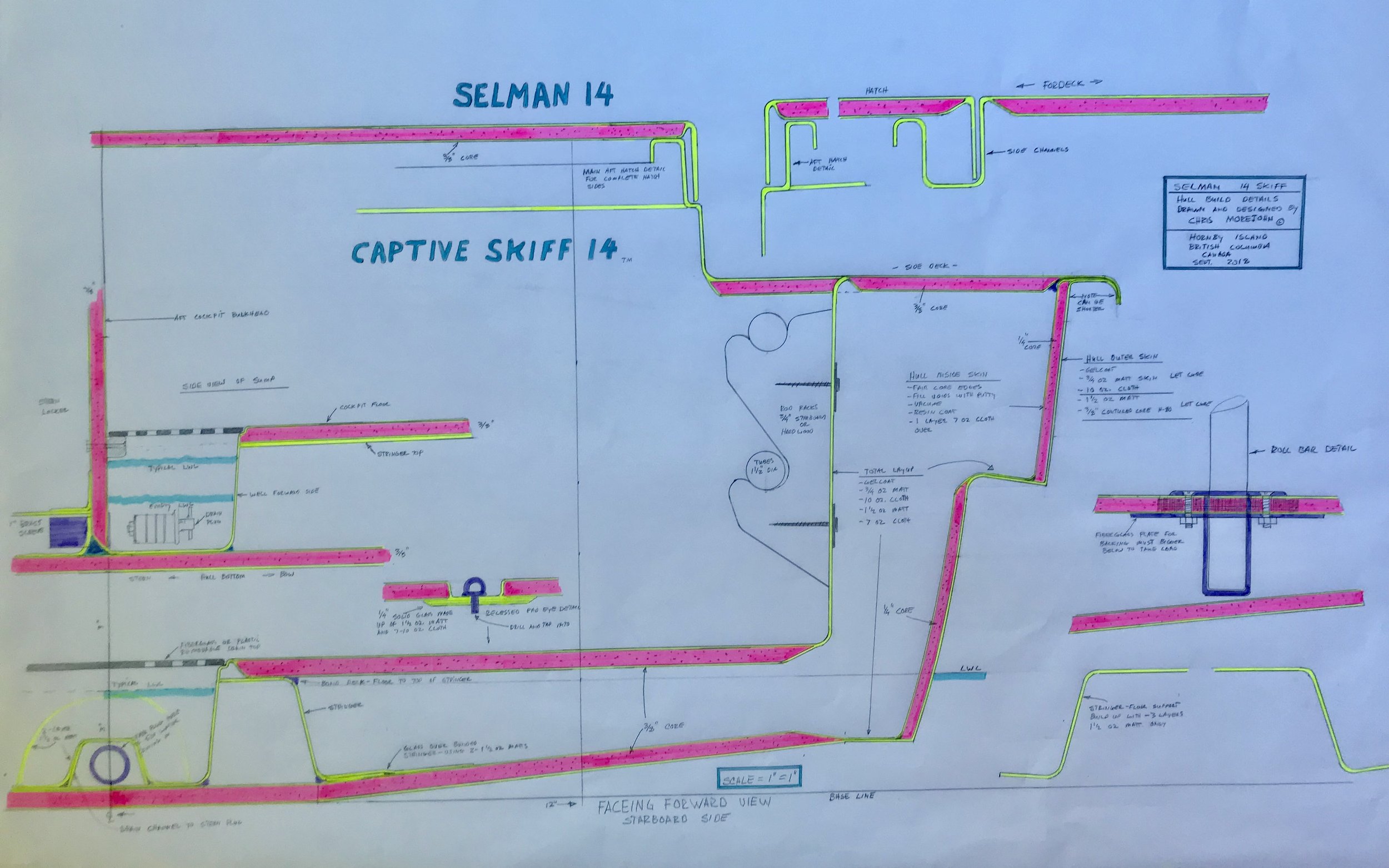A Different type
of skiff.
The Captive 14 Microskiff began life in 2019 after the building of another microskiff, the Bateau SK14. The Batteau was an okay boat, but lacked a lot of features that any hard-core fishing skiff should have. It lacked storage. It was wet. It was a bit heavy in back, and, being built of marine plywood, a lot heavy overall. It also wasn’t much of a blank canvas, functioning more like a paddle board on wooden steroids than a real boat.
But it got attention everywhere it went. She even got me chased through the Fort Myers Bass Pro parking lot, wife and kids in the car, but two guys who just wanted to talk boats.
So I came up with a list of potential improvements, bought a bunch of graph paper, and set out to design the ultimate microskiff. Then, realizing that I had little idea as to what I was doing, I got in touch with Chris Morejohn.
I first came across Chris through his woodcarvings. He did fish, I did fish. For those who don’t know, Chris was/is the original designer of the Hell’s Bay skiffs, and he knows one or two things about designing and building light skiffs.
We came up with a list of needs, and he went to work. Everything on the skiff had a purpose, from the bow shape to the motor inset. I’ve written about it elsewhere, and I won’t bore you with the details here. You can find it someplace, I’m sure. Long story long, I built the skiff, and it works great.
I sold plans for awhile, but did a terrible job keeping up with them. So here is my boatbuilding gift to the world: free plans. You’ll have to figure it all out yourself… I’m too busy to run a boat building forum these days, but I’ll give you this. Use epoxy, and use three layers of 10-oz glass for the lamination. That’s what I (mostly) did. Outside of that, experiment with her. False floors, no floors, bulkheads, motor sizes (she’s rated for 15hp, but runs 18 with an 8hp). Go nuts, use your imagination, don’t kill yourself.










